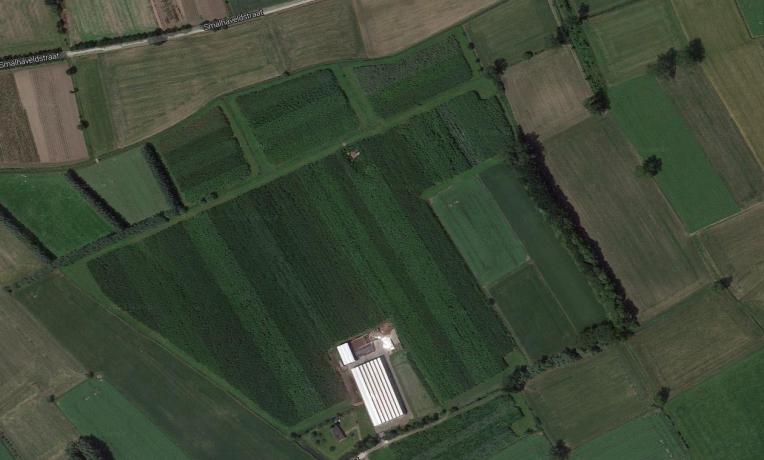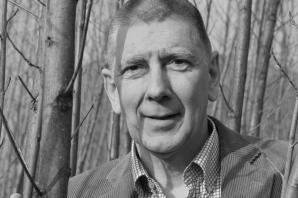Biomass by numbers
The use of biomass from plants as a renewable energy source is not new. Yet surprisingly, the positive net economic and environmental benefits of biomass energy exist only on paper. This is about to change thanks to the largest experimental tree plantation in the world, which takes place in East Flanders. Professor Reinhart Ceulemans and his team are working to get the numbers needed to inform evidence-based decisions on the role of renewables in future energy policies.

The results of small-scale experiments show that using biomass energy sources is very attractive: they are both carbon-neutral and renewable. This is why wood-based biomass is already a commercial technology of much interest to policy-makers. However, the theoretical basis for clean biomass energy remains exactly that – theoretical.
“There are three questions that have never been fully answered about energy from wood-based biomass,” explains Reinhart Ceulemans: “Is it efficient? Is it economically profitable? And, above all, does it truly save on greenhouse gas emissions?” To answer these questions, he and his team from Belgium’s University of Antwerp are implementing the POPFULL project with a five-year ERC Advanced Grant to undertake a complete life-cycle analysis (LCA) for a large-scale biomass plantation. They are measuring all inputs and outputs along with the costs and benefits they have for the environment.
In Flanders’ fields (and forests)
Close to Ghent, the team has established a mixed plantation of fast-growing poplar and willow tree varieties: 100,000 trees covering over 18 hectares. They are investigating short-rotation coppicing (SRC) where the trees are cut back to the ground every two years and their stems and branches harvested, chipped and used to generate energy by burning.
The research project will cover two harvesting cycles in 2012 and 2014. As a vital part of the LCA, all inputs and outputs from the SRC process are measured, such as the fuel used by plantation machinery, the greenhouse gas (GHG) emissions from biomass combustion and the energy produced. In addition, the eco-system carbon balance is measured, meaning the GHG inflows and outflows in the plantation, including CO2, CH4 and N2O and others. “By combining the SRC process measurements with those on the eco-system we will arrive at a full LCA carbon balance for short-rotation coppicing and a quantitative result on its contribution to global warming,” explains Ceulemans.
New tools and tall towers
“The measurement of greenhouse gas fluxes is the key element in our work – it is only recently that the new tools and techniques to do this have become available,” says Ceulemans. Among the rows of trees is a tall mast supporting the three-dimensional anemometer and highly-sensitive gas analysers. “We continuously measure the wind speed in three directions and the GHG concentrations in the atmosphere to obtain the net fluxes into and out of the plantation. The difference is the uptake of gases by the trees, mainly through photosynthesis. The instruments are highly sensitive, we can see photosynthesis dropping off as night falls and even the rise in CO2 when we have large groups of visitors.”
Much of the valuable work on measuring GHG fluxes was undertaken by Dr Donatella Zona, a key researcher in the team, supported by a Marie Curie Grant. “This is a unique plantation, the first in the world with the equipment to measure the full greenhouse gas balance and thus produce a full life cycle analysis,” explains Ceulemans, “So we have seen a lot of interest – even National Geographic magazine has made a documentary on the project.”
Harvesting results
“After one rotation we have seen that we get twice the energy out as is put in, and the second rotation will be better; so the plantation is energy efficient. For the evaluation of the greenhouse gases effects we still need the results from the second rotation following the second harvest in February 2014 which will be a key moment for the research project. So far the process is not fully carbon neutral, but we are saving considerable amounts of greenhouse gases compared to fossil fuels,” says Prof. Ceulemans. This means that the greenhouse balance is probably highly favourable. “There is an economic dimension to the success of this innovative bio-energy production. We suspect that, without subsidies, SRC will only be economically viable over a period of 20 years or so. Yet, many energy sources are subsidised, so this is a matter of policy rather than simple economics,” he explains.
“Looking more widely, when POPFULL is complete we will have the hard numbers that will allow science- and evidenced-based policy-making to help biomass find its right place in the energy mix of the future.”


